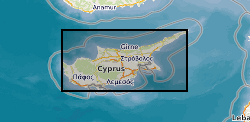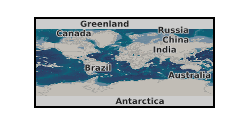Ophiolites
Type of resources
Available actions
Topics
Keywords
Contact for the resource
Provided by
Years
Formats
Update frequencies
-

Os isotopes, highly siderophile element abundance measurements, lithophile trace element data, major element data, electron microprobe and LA-ICP-MS mineral chemistry of Cr-spinel and sulphide - all data for a suite of peridotites from the Shetland Ophiolite Complex, and published in O'Driscoll, B., Walker, R.J., Clay, P.L., Day, J.M.D., Ash, R.A. and Daly, J.S. 2018. Length-scales of chemical and isotopic heterogeneity in the mantle section of the Shetland Ophiolite Complex, Scotland. Earth and Planetary Science Letters, 488, 144-154 All samples come from a locality called The Viels, sampled within a 45 m2 area, on the island of Unst, Shetland Archipelago (UK) at HP64438 11060 (British National Grid)
-

Geochemical and field data collected from samples from ore deposits hosted in the Troodos ophiolite, Cyprus by Dr Andrew Martin during his PhD. File T1 contains sample names, locations and description and file T2 contains photographs and field observations for sample localities. File T3 contains portable x-ray fluorescence (XRF) data from powdered Troodos ophiolite samples. Files T4 - T8 contain sulphide trace element data from laser-ablation inductively-coupled-plasma mass-spectrometry (LA-ICP-MS) analysis of samples from various deposits in the Troodos ophiotlite. Files T9 and T10 contain bulk sample geochemistry from aqua regia digest and ICP-MS for deposits from the Troodos ophiolite. File T11 contains results from conventional ä34S analysis of sulfide minerals from Troodos deposits and file T12 contains x-ray diffraction analysis data from silica-rich deposits in the Troodos ophiolite. Data is used in papers available at https://doi.org/10.1016/j.oregeorev.2019.01.024, https://doi.org/10.1180/mgm.2018.81 and https://doi.org/10.1016/j.chemgeo.2019.119325 and in Dr Andrew Martin's PhD thesis, available at http://orca.cf.ac.uk/124346/.
-

Zircon U-Pb isotope data are presented for eight plutonic rocks from the Masirah ophiolite and one plutonic rock from the Ra's Madrakah ophiolite (south east Oman). These data constrain the age of formation of the two ophiolite nappes exposed on Masirah Island (early Cretaceous), whereas two intrusions with younger ages (late Cretaceous) overlap with the proposed emplacement age of the ophiolite. The data cover two sites in the Masirah Lower Nappe, two sites in the Masirah Upper Nappe (on Masirah Island, off the SE coast of Oman) and one site on Ra's Madrakah (on the mainland of Oman). The interpretation and discussion of these data form part of a manuscript submitted to Geochemistry, Geophysics, Geosystems. Data collection was done using chemical abrasion isotope dilution thermal ionisation mass spectrometry (CA-ID-TIMS) at the NERC Isotope Geosciences Laboratories at the British geological Survey, supported by NERC Isotope Geosciences Facilities award IP-1919-0619. This work resulted from a PhD project funded by NERC GW4+ DTP grant NE/L002434/1.
 NERC Data Catalogue Service
NERC Data Catalogue Service